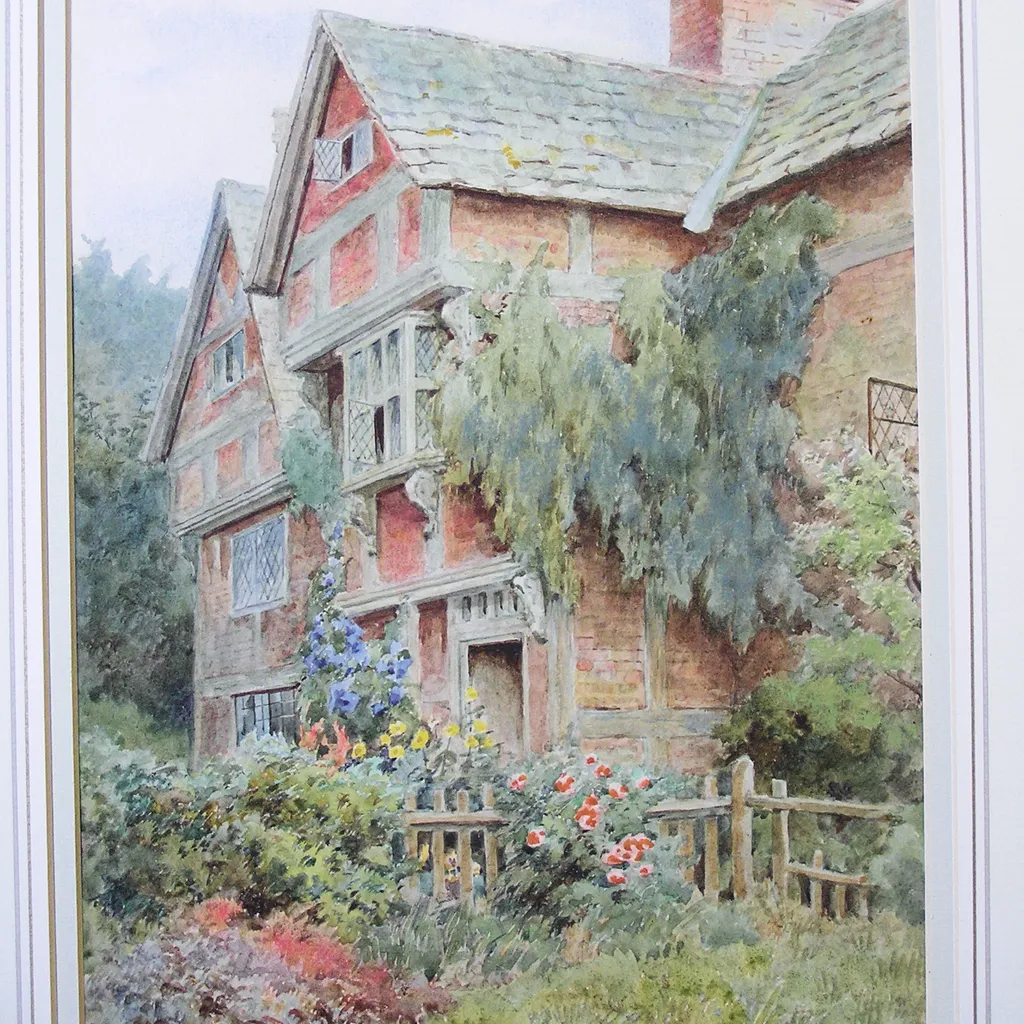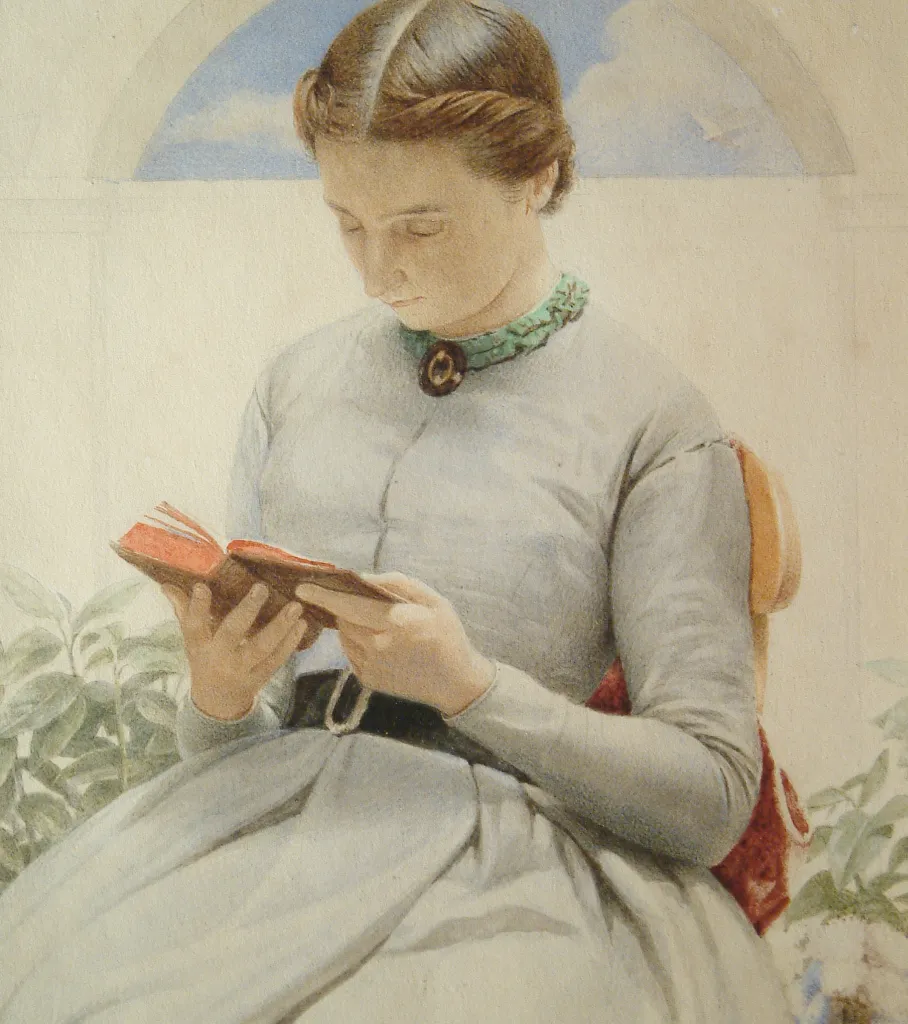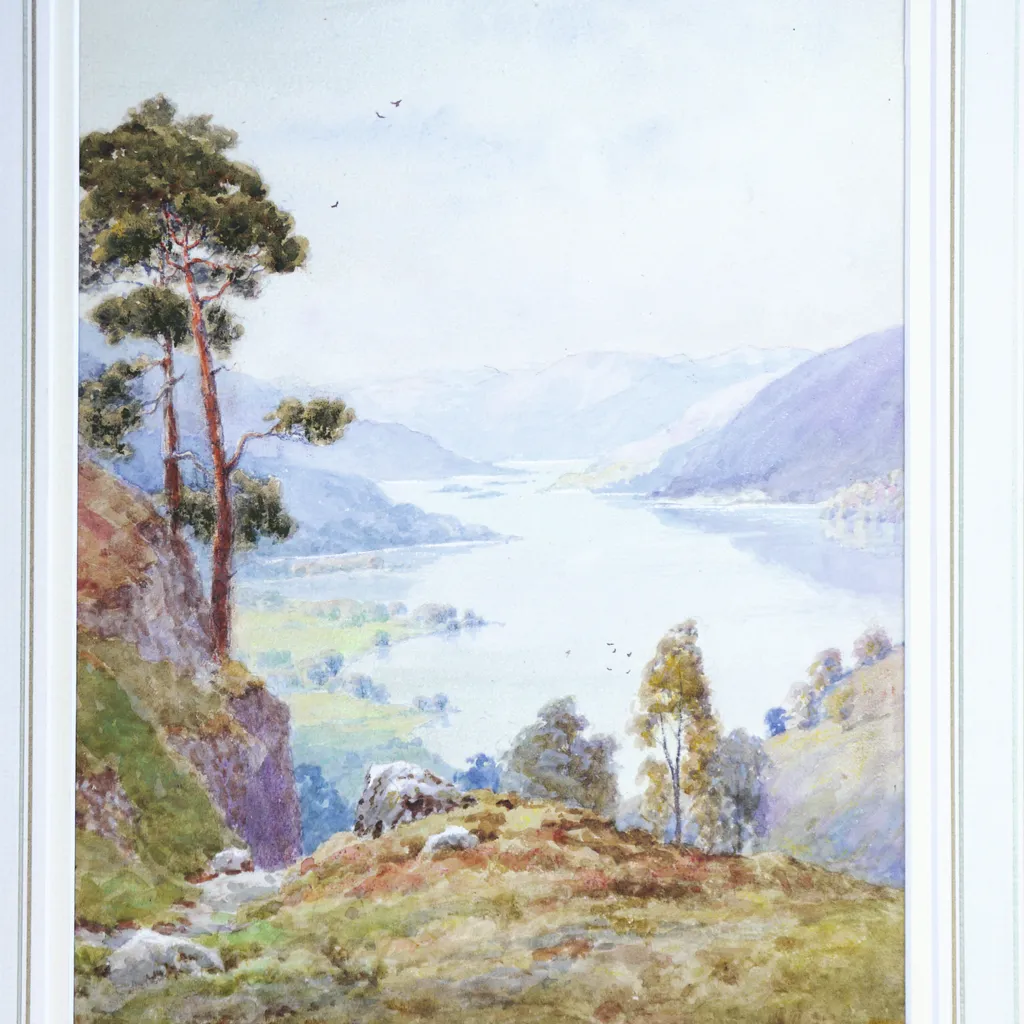'There is nothing quite as evocative of the English garden as a Victorian watercolour painting. Pristine blues and pinks celebrate the joys of delphiniums and peonies in full bloom against lush thickets of deep green foliage. Translucent washes recreate the light haze of a summer morning and its associations of cool dew and delicate floral fragrance.’
This was the response I received when I asked one of my clients what she loved about her collection of Victorian watercolours. For another, the appeal is in the variety of subjects and the technical skill: ‘The draughtmanship and technique involved in watercolours has to be good because the medium is so delicate.’ As for me, I have to say I share their enthusiasm.
The first watercolour that hooked me was in the late 1980s, right at the beginning of my career in the art world. It was an intense, jewel-like work by John George Naish (1824-1905), a follower of the Pre-Raphaelites, depicting a figure on a stormy Cornish coastline with boats on the horizon. Painted with incredible detail, it was knocked down to me for only £250, though its value now is closer to £1,500.

I cleaned and reframed the work and hung it on a wall at home, and the more I looked at it, the more my interest grew. Where can one find a similar field with so many schools, influences, techniques, subjects, variety, artists and such differing values? You can’t! The Victorians supplied us with some of the most stunning, beautiful and sublime watercolours from any period and they are out there waiting to be discovered, whatever your budget. Christopher Wood’s excellent Dictionary of Victorian Painters lists thousands of artists who were professional painters but there were just as many good amateurs and semi-professionals.
You might also like collecting bird prints
Nearly all middle and upper class Victorians painted – packing for a holiday wasn’t complete without sketch books and a watercolour set. And it wasn’t only on their travels that they painted. Just as we use a camera today, people routinely recorded events of interest in watercolour.
The rise of watercolours

The rapid developments of the Victorian period supplied artists with a wide range of subjects. The Great Exhibition of 1851; the devastating Irish Potato Blight; burgeoning industrialisation and the child labour it relied upon; the Crimean and Boer wars; even the emergence of cycling and lawn tennis; alongside domestic and still-life scenes – all were fodder for the artist’s brush. New art schools opened and exhibition societies were founded, providing artists not only with a place to exhibit but also to sell works and promote the medium.
Watercolourists aspired to exhibit their work at the Royal Academy in London, but many members showed indifference or even hostility, considering it a medium for amateurs. Even the Old Water Colour Society (later the Royal Watercolour Society), founded in 1804, had become an exclusive, old-fashioned club by the 1830s, leading to a split and the creation of the New Water Colour Society (later the Institute of Painters in Water Colours) in 1831. The two societies remained bitter rivals for the remaining years of the 19th century, vying to attract the best artists and, crucially, the richest buyers.

Often demand was so strong that artists would be commissioned to paint several versions of an exhibited painting. Some painters received celebrity status, especially those supported by wealthy patrons. At the top of the tree was the Pre-Raphaelite group of painters (1848-1854): Dante Gabriel Rossetti (1828-1882), Sir John Everett Millais (1829-1896), William Holman Hunt (1827-1910) and their followers, who painted complex compositions with abundant detail and intense colours.
Many of these watercolours now hang in public galleries and private collections. When they do come up for sale, prices are high – Rossetti’s The Loving Cup sold for a record £300,000 in 2007 and Burne Jones’s The Triumph of Love made £457,250 in 2008.

Big names aside, the recent fashion for modern art and minimalist spaces means the market has dipped and, especially in the low to mid range, there are some fabulous buys to be made. Indeed, the choice is so vast that the problem is more in deciding what to buy.
Some focus on genre. At the more affordable end of the market, Edward Radford and Charles Green are known for portraits and domestic scenes; Elliot H Marten and Wilmot Pilsburg produced good landscapes; Frederick James Aldridge, Thomas Bush Hardy and Fred Dade specialised in seascapes; while the country scenes of Claude Hayes, Thomas Nicholson Tyndale, Helen Allingham and the Stannard family are charming. Others focus on a particular artist. Works by Robert Winchester Fraser, William Garden Fraser and Francis Gordon Fraser crop up all over the country.
You might also like where to find vintage flower paintings
All from the same family in Huntingdonshire, they travelled from town to town, making a living by painting local scenes. Francis Gordon Fraser is the lesser known artist and you can buy works from £100-£1,000; Robert Winchester Fraser from £300-£3,000 and William Garden Fraser from £400-£60,000. Another painter who travelled extensively was Albert Goodwin, RWS (1845-1932), whose work I seriously admire.

Predominantly a landscape painter, he worked as an assistant to Ford Madox Brown and Arthur Hughes. His works are often drawn and coloured beautifully with a great sense of atmosphere. Small studies can make anything from £800 but the exceptional can command up to £50,000.
Another way to collect is by concentrating on local artists. Most regional galleries hang fabulous examples by Victorian artists who lived nearby. Keep an eye on local fairs, dealers and auction houses too and you’ll soon notice that watercolours by local artists appear on a regular basis. Delightful scenes by Henry Charles Fox (1855-1929), a watercolourist based in West Sussex, used to pop up all the time when I started out at Sotheby’s in Billingshurst, and made from £200-£800 each. Prices haven’t increased a great deal since the 1980s – good news for the avid collector.
But of course the key thing, as with any antique, is to buy what you like. Two of my most treasured possessions are watercolours given to me by my late mother. Neither is particularly valuable but with their vernacular architecture, period costume and trees full of cherry blossom, they paint a delightful picture of life as it was. And on that note, I’ll leave you with another thought from my collector client. ‘The enduring appeal of my watercolours reassures me that some values in life do not alter and that perhaps in another 100 years the paintings will provide as much pleasure to others as they do now to me.’

How to buy watercolours
When buying, always have a good look on the reverse to see if you can find any faint pencil inscriptions. Often these have been missed by previous owners and can provide a title/view, address of the artist and sometimes exhibition history or the original price paid. If the work is signed, see if the artist is recorded in any of the well-known dictionaries. Ascertain if it is in the original frame – does it look old and untouched? – which often increases value.
How to care for watercolours
Keep watercolours away from direct sunlight and use ultraviolet filtering glass for framing. Humidity can cause mildew, which is known as ‘foxing’ and usually shows as small dark brown spots on the surface. Foxing can normally be treated by a professional watercolour restorer by fumigating active mould spores. Sometimes, old paper can become acidic, but a professional restorer can rectify this with an alkaline solution. Be careful when cleaning the glass of frame to avoid chemicals getting behind the glass.
Find out more
What to read
- Victorian Painters: The Text, Christopher Wood (1995, Antique Collector’s Club, £35)
- Victorian Painters: Historical Surveys & Plates (to accompany the previous book), Christopher Wood (1995, Antique Collector’s Club, £35)
- Hidden Talents – A Dictionary of Neglected Artists Working 1880-1940, Jeremy Wood (1994, Jeremy Wood Fine Art, £30)
- The Dictionary of British Artists, 1880-1940, J Johnson (1977, Antique Collector’s Club, £40)
- The Dictionary of Watercolour Artists, up to 1920 (Volumes 1 & 2), HL Mallaieu (Antique Collector’s Club, 1999, £25 each)
Where to see
- Victoria & Albert Museum Print Room, V&A South Kensington, Cromwell Road, London. 020 7942 2000
- British Museum, Prints & Drawings Department Study Room, Great Russell Street, London. 020 7323 8408
- The Whitworth Art Gallery, The University of Manchester, Oxford Road, Manchester. 0161 275 7450
- Birmingham Museums & Art Gallery, Chamberlain Square, Birmingham. 0121 303 2834
Where to buy
- Chris Beetles, 8 & 10 Ryder St, St James’s, London. 020 7839 7551
- Ian Walker (Walker Galleries), 6 Montpellier Gardens, Harrogate, North Yorkshire. 01423 567933
- The Bourne Gallery, 31-33 Lesbourne Road, Reigate, Surrey. 01737 241614
- The Canon Gallery, Near Huntingdon, Cambridge. 01832 293 206
- Sarah Colegrave, 18 Glazbury Road, London, 020 7602 1959
- Campbell Wilson (Neil Wilson), Castle of Park, Cornhill, Aberdeenshire. 01466 751595
- Maas Gallery, 15a Clifford Street, London 020 7734 2302